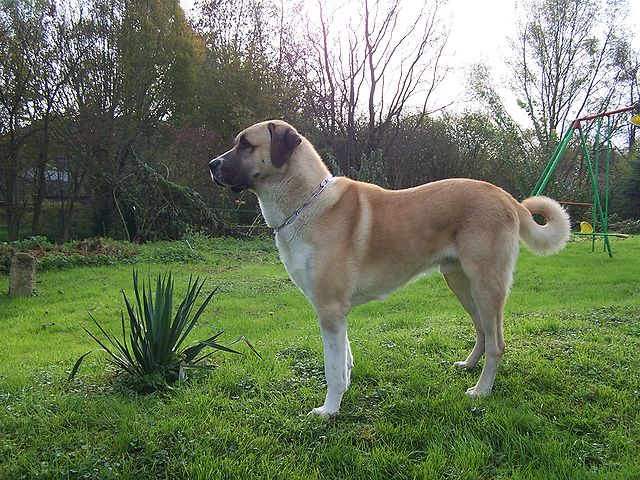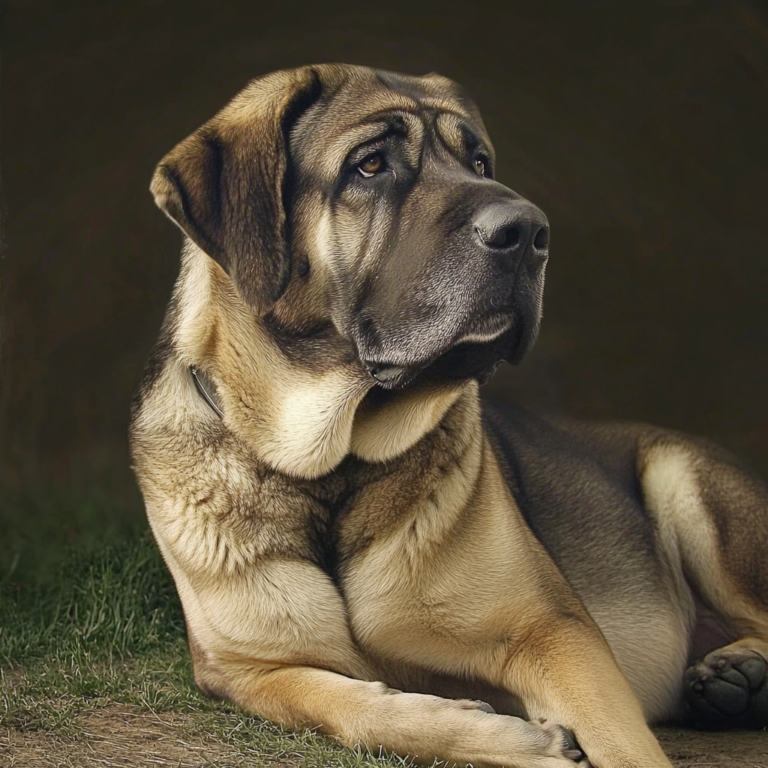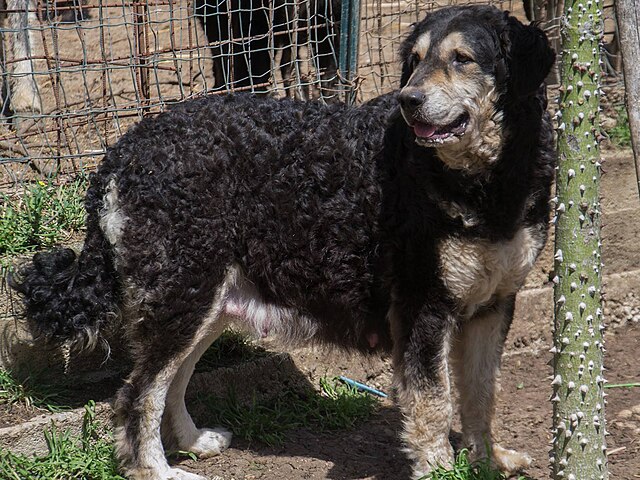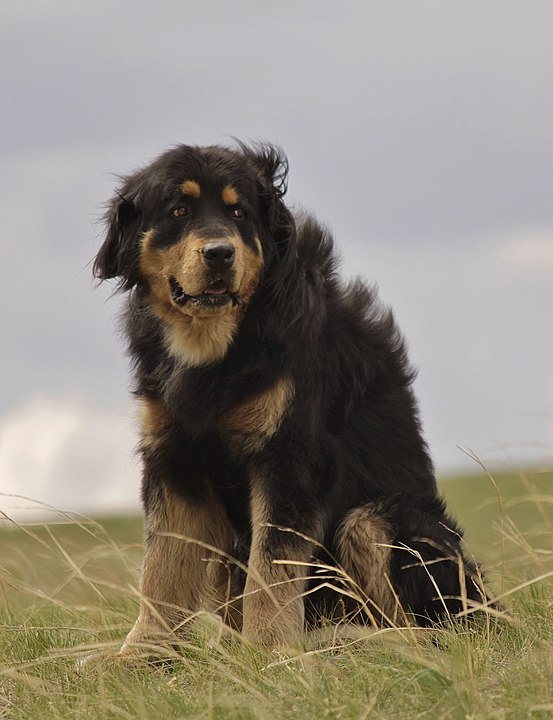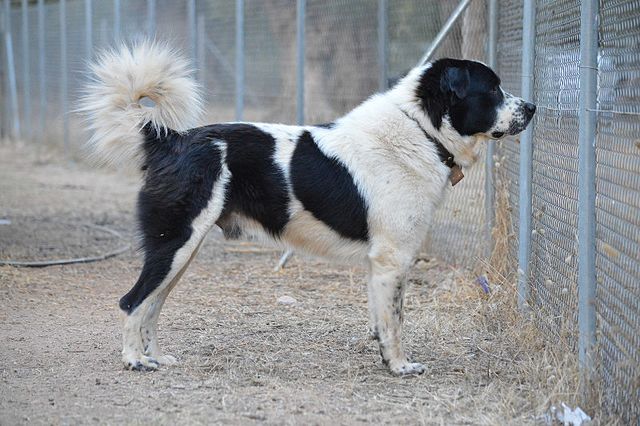The Anatolian Shepherd Dog is a breed that is still used today for his original purpose – guarding livestock, both is his homeland of Turkey as well as around the world. This huge dog is a deterrent to predators… and he will back up his heavy bark with powerful teeth if need be. Because most predators will leave livestock alone if they see a giant dog sitting guard, the predators themselves are being protected as well (otherwise, they would be shot by humans). Anatolians are a big part of the Cheetah Conservation Project in Africa – an undertaking that serves to protect the big cats from being hunted by farmers.
Although these loyal guardians can become very bonded to people, it takes a special type of person to own this breed. They must be treated fairly, yet firmly. Rules must be put into place from the very start and enforced throughout the dog’s life. This often-dominant and habitually possessive breed will quickly take charge if rules are lacking, and some dogs can even become dangerous in the wrong hands. This is a serious dog that puts the protection of his master in the highest regard – and he will take it upon himself to decide who is friend and who is foe. For obvious reasons, proper socialization and lifelong training are an absolute necessity! Anatolians require formal introductions to house guests before allowing them in the house.
Given these things, these molossers can be very laid-back and calm – some even making great therapy dogs! The more experienced the owner and the more time put into the dog, the better the outcome. An experienced owner always keeps in mind that Anatolians are confident but ever-alert to danger. In addition to providing a stable household and plenty of balanced affection, a good owner will never put their dog into a situation that might cause the dog to react. Furthermore, a good owner will not train aggression into an Anatolian, knowing that his protective instincts are natural and need no special training for them to emerge. “Guard dog training” will create a dog that is unsafe to everyone – owner’s family included!
The Anatolian requires a high fence for his yard and he should never be walked off-leash in public. Because of his very high guarding instincts and suspicion of strangers, a roaming Anatolian can be a recipe for disaster and it is the owner’s responsibility to make sure the dog is always kept safe and secure. Running loose in the neighborhood, his powerful build and impressive size can make him a frightening sight for many people! Bigger males are close to 150 pounds of solid muscle, and even a small female is still 27 inches tall at the withers and 80 pounds, which is a very large dog! Fences should be six feet tall and very secure since some of these dogs are Houdinis.
The Anatolian can come in any color pattern, and he can also come in either a short or a long coat. Just because most of these Turkish molossers are short-haired, and fawn-colored with a black mask, doesn’t mean that there isn’t a rainbow of colors in the breed! The coat tends to stay fairly clean and doesn’t have too strong of a doggy odor, although it will require regular brushing – especially during heavy shedding seasons which occur twice a year. Speaking of appearance… it is important to note that these dogs are very slow to mature and may remain “gawky” for several years. They aren’t considered fully grown until around 3-4 years. This means that about a third of their life is spent growing up (typical lifespan is about 12-13).
Most Anatolians are affectionate and trustworthy around the family’s children because they consider each child to be part of the pack, and therefore, something to protect. This is the same basic way that it works for livestock. A young livestock guardian puppy is raised with the sheep so that he come to define each animal as a pack member. While the Anatolian will treat the family’s children as one of his own, he will not tolerate strange children, nor will he tolerate children who misbehave. This is not a dog to bring to a child’s birthday party! Furthermore, supervision is always required whenever the dog is around any kid. With other dogs, the Anatolian tends to want to dominate. Most of the time, two males cannot live together. Adding in other animals when the dog is an adult can take extra time and lots of supervision – Anatolians are much more likely to accept new family members while they are still puppies.
Anatolians were bred to make decisions for themselves and are therefore very intelligent. They are easy to housebreak and learn most things fairly quickly. This said, some have a stubborn streak that practically rivals their own giant size! Because they are so independent, they don’t always understand the point of obedience training. This is unfortunate, since Anatolians MUST be taught obedience, but a good trainer can help make it fun for the dog. Obedience training is one of the ways that an owner can establish himself as “top dog”, and if done right, will be a positive experience for both dog and human.
The Anatolian is a quiet dog most of the time but will sound an alarm if he sees (or hears) someone coming closer to the property. This can include people that he sees through the window, a wandering cat, or an unexpected sound. For this reason, there is a wide variation of noise with this breed, depending on living situations. People who live in crowded or busy neighborhoods will probably have a much noisier dog that those that live out in the countryside. The older the Anatolian gets, the more he will learn what sights and sounds are “normal”, and which are actual threats.
Unlike many breeds, an Anatolian can be kept outside as long as he is provided with shelter from the elements. Many actually prefer being outside, where they can survey their territory without the visual confines of walls. One caveat though – this breed should never be left out on a chain while outside! Not only is this practice dangerous to the dog, but it will make him extra defensive and can psychologically damage him. Not to mention the fact that a chained dog isn’t a deterrent to a criminal anyway! Some Anatolians get nervous if they aren’t near “their people”, however, and these dogs may be better as mostly-indoor dogs.
